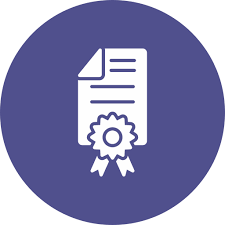Section outline
-

Miss J. Mokwena
MODULE : Computer Applications Technology (CAT)
GRADE: 10
CONTACT EMAIL: janeejaymk123@gmail.com
OFFICE VENUE: Room 111, Computer Lab
CONSULTATION HOURS:
These include online chats, emails, and WhatsApp discussions.Monday: 10:50 to 14:00 [Online]
Wednesday: 10:00 to 12:00

-

Welcome to the Grade 10 Computer Applications Technology (CAT) module, where you will explore important topics related to the digital world, including network technologies, system technologies, and e-communication. By the end of this course, you will have developed the technical skills needed to understand and navigate modern digital environments.
Module Outcomes:
Upon successful completion of this module, learners will be able to- Understand the fundamentals of network technologies, including different types of networks, network topologies, and protocols.
- Explore System Technologies, learning about hardware components
- Manage and present digital information using various tools and techniques, focusing on efficiency and accuracy.
- Learn about the rules and steps to Green Computing
- Develop problem-solving skills related to real-world scenarios in digital and ICT settings.
Important Note:
There is no prescribed textbook for this module. All necessary materials and resources will be provided through the Moodle platform and other online sources. These resources will include readings, videos, interactive activities, and assessments designed to support your learning.Teaching Philosophy:
As an educator, I believe that learning should be interactive, engaging, and empowering. I aim to create an environment where students not only acquire knowledge but also develop the critical thinking and problem-solving skills necessary for success in today’s digital world.
Theoretical Framework:
This module is grounded in the following educational theory to ensure a holistic and effective learning experience:
Constructivism (Piaget, Vygotsky): Learners actively construct their own understanding and knowledge by engaging with real-world experiences. This approach emphasizes hands-on learning, inquiry, and problem-solving.
Learning Design Principles:
This module is designed using the Backward Design Model for instructional design:
Analysis: The learning needs of Grade 10 students are identified, focusing on network technologies, system technologies, and information management as outlined in the CAPS curriculum.
Design: I have structured the module to be learner-centered with interactive elements, multimedia resources, and varied assessments to cater to different learning styles.
Development: Materials include instructional videos, quizzes, and collaborative activities, all designed to support the learner's journey.
Implementation: Content will be delivered through the Moodle platform, ensuring that resources are easily accessible, organized, and effective for both learners and teachers.
Evaluation: Continuous feedback will be gathered from learners through assessments to ensure that learning outcomes are achieved
Grievance Procedures:
It is important to maintain a respectful and supportive learning environment. If you encounter any issues or have concerns about the course content, assessments, or any aspect of the module, please follow these steps:Step 1: Direct Communication
If you have any concerns, feel free to reach out to me directly via email at janeejaymk123@gmail.com or during my office hours. I am always available to discuss any issues you might have.
Step 2: Consultation with Head of Department (HOD)
If the issue remains unresolved after contacting me, you are encouraged to approach the Head of Department (HOD). You can contact them via email for further assistance.
Step 3: Formal Complaint
Should the matter still not be resolved, a formal complaint may be submitted to the school principal for further assistance. -

This page offers a tasks section for learners to complete and submit their assignments.
-
Opened: Sunday, 18 May 2025, 12:00 AMDue: Thursday, 22 May 2025, 12:00 AM
Please note that Assignment 1 is now available. This assignment covers topics related to network technologies, system technologies, and information management.
Find the attached document to access the assignment and rubric
-
Memorundum File PDF
-
-
-
In this section, we will explore the various categories and classifications of computer networks.
-
Here, we will examine the benefits and challenges associated with using Home Area Networks (HANs) and Personal Area Networks (PANs), along with various network types.
-
This section outlines the steps and considerations involved in setting up your own Home Area Network (HAN) and Personal Area Network (PAN).





